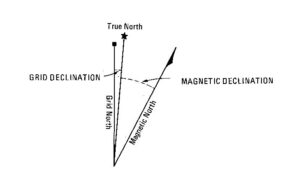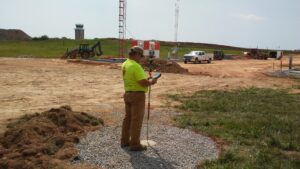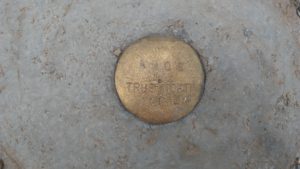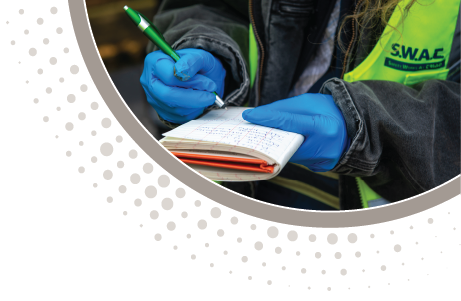True North Survey
By: Cyndi Powell and Jon Taylor
Triad survey was tasked with the unique challenge of establishing a True North survey control monument for a project at the Frederick Regional Airport. This was not your average survey request. The last time anyone within Triad could remember providing a True North bearing on a survey project was nearly 25 years ago.
Triad was providing construction materials testing and inspection services and survey services in support of the contractor for Phase III Obstruction Removal at Frederick Airport. The scope of the project included relocating the glide slope antenna and automated weather observing system (AWOS). Relocating the AWOS tower required stakeout and construction of a True North monument which is used to align the wind sensor mounted to the tower. The monument was to be established relative to the center of the AWOS tower.

To establish a True North bearing was essentially a foreign task to our survey staff. To tackle this problem, we did a fair amount of research into methodologies we could employ to complete the task with a high level of accuracy.
Each region of the earth has a grid system that is used to process survey data. This grid system has a “grid North” coordinate. To arrive at a True North bearing, our team had to determine the convergence angle of declination from the “grid North” so that all lines of longitude would be aligned to True North or geodetic North.
One of the methods we first explored was based on solar observations. We enjoyed the opportunity to stay up all night turning angles to Polaris, but quickly discovered this method was going to be overly time consuming and costly.

Our next course of action was to tap into our industry contacts and resources with the National Geodetic Survey (NGS). NGS has valuable and readily available resources to help determine the calculations for a True North survey bearing. We tested three different methodologies offered by NGS and each method yielded the same result giving us confidence in the final product.
The first method we tested used NGS’s Coordinate Conversion and Transformation Tool (NCAT). Using NCAT, we entered positional data specific to the relocated AWOS tower and the resulting output included a convergence angle for the AWOS tower’s latitudinal and longitudinal position. Next, we struck ‘grid north’ line from the AWOS tower, turned the convergence angle provided from NCAT, and extended that line to the desired distance.
Another NGS tool we used was a program entitled FORWARD. This program allowed us to enter the latitude and longitude of the AWOS tower and specify the geodetic azimuth and distance we needed to travel. The resulting output was the latitude and longitude of the true north monument to be set.

Using both methods, we obtained identical coordinates for the true north monument.
As a final check, we verified that the tower and true north monument coordinates had the exact same longitude using NCAT and AutoCADD.
With our field data and calculations in place and confirmed, we staked out and installed a physical concrete monument with a brass plate marking the True North bearing in relation to the newly relocated AWOS tower.

This was a unique challenge for our survey team. In the end, we learned about available resources and developed a new skill set to help us solve these types of problems in the future.
For more information on our services or questions, please visit the Contact Us page.


